How Does a Waveguide Isolator Prevent Signal Reflection and Backpropagation?
In the realm of microwave transmission systems, maintaining signal integrity is paramount. Signal reflection and backpropagation are common challenges that can severely degrade system performance and potentially damage sensitive equipment. Waveguide isolators represent an elegant and effective solution to these problems. These specialized devices allow microwave signals to propagate freely in the forward direction while effectively blocking signals traveling in the reverse direction. This unidirectional characteristic makes waveguide isolators essential components in many high-frequency applications, including radar systems, satellite communications, and advanced telecommunications infrastructure.
A waveguide isolator functions based on the principles of Faraday rotation, utilizing ferromagnetic materials under the influence of a permanent magnetic field to create non-reciprocal transmission properties. This specialized design enables the isolator to provide high forward transmission with minimal loss while simultaneously offering substantial attenuation (typically 20 dB or more) for reverse signals. By preventing signal reflection and backpropagation, waveguide isolators protect sensitive components, enhance system stability, and maintain optimal performance across the entire microwave transmission chain.
Operating Principles of Waveguide Isolators
Faraday Rotation and Non-Reciprocity
Waveguide isolators achieve their unique functionality through the phenomenon of Faraday rotation. This principle involves the rotation of the plane of polarization of an electromagnetic wave as it passes through a magnetized material. At the heart of the waveguide isolator is a ferrite material—typically garnets, spinels, or other ferromagnetic compounds—that is subjected to a strong, permanent magnetic field. When a microwave signal encounters this magnetized ferrite, the interaction between the signal's electromagnetic field and the ferrite's magnetic moments causes the plane of polarization to rotate in a specific direction, regardless of the signal's propagation direction. This non-reciprocal behavior is fundamental to the isolator's operation, as it allows the device to treat forward and reverse signals differently. In a properly designed waveguide isolator, the forward-traveling wave experiences minimal attenuation as it passes through, while the reverse-traveling wave undergoes significant phase shifts and attenuation, effectively preventing it from propagating back through the system. Advanced Microwave Technologies Co., Ltd. has perfected this technology in our waveguide isolator designs, ensuring optimal performance across a wide range of frequencies up to 110 GHz.
Magnetic Biasing and Material Selection
The effectiveness of a waveguide isolator is heavily dependent on proper magnetic biasing and material selection. The permanent magnets used to bias the ferrite material must produce a uniform and consistent magnetic field to ensure reliable performance. These magnets are carefully positioned around the ferrite element to create the desired field strength and orientation. The selection of ferrite material is equally crucial, as different compositions offer varying performance characteristics across different frequency bands. Factors such as saturation magnetization, line width, and temperature stability all influence the isolator's performance. Advanced Microwave manufactures waveguide isolators with a wide range of designs available for high-power microwave and RF applications, offering various isolator designs with several standard and custom options. Our engineering team meticulously selects and tests materials to ensure each waveguide isolator meets or exceeds performance specifications. This attention to detail enables our isolators to maintain their isolation properties even in challenging environments, providing reliable protection for sensitive system components across industries from telecommunications to aerospace and defense.
Waveguide Design Considerations
The physical design of the waveguide structure around the ferrite element significantly impacts the isolator's performance. Parameters such as the waveguide dimensions, ferrite positioning, and transition geometry must be precisely calculated and manufactured to achieve optimal results. The waveguide cross-section determines the operating frequency range, with larger dimensions supporting lower frequencies and smaller dimensions supporting higher frequencies. The positioning of the ferrite element within the waveguide is critical for maximizing the interaction between the electromagnetic field and the magnetized material. Additionally, impedance matching structures are incorporated to minimize insertion loss and return loss, ensuring efficient power transfer through the device. Our waveguide isolator designs at Advanced Microwave Technologies Co., Ltd. incorporate precision engineering and advanced machining techniques to ensure exceptional performance and reliability. Despite their powerful capabilities, our isolators feature compact designs, allowing for space-saving installation without sacrificing functionality or efficiency. This meticulous attention to waveguide design enables our isolators to deliver superior performance across various applications, from satellite communications to research and development environments.

Performance Metrics and Optimization
Isolation Ratio and Insertion Loss
Two critical performance metrics for waveguide isolators are isolation ratio and insertion loss. The isolation ratio represents the device's ability to attenuate signals traveling in the reverse direction compared to those in the forward direction, typically expressed in decibels (dB). A higher isolation ratio indicates better protection against reflected signals. Most high-quality waveguide isolators, including those manufactured by Advanced Microwave Technologies Co., Ltd., achieve isolation ratios of 20 dB or higher, meaning that reverse signals are attenuated by a factor of 100 or more. Insertion loss, on the other hand, quantifies the amount of signal power lost when passing through the isolator in the forward direction. Lower insertion loss values are desirable, as they indicate more efficient power transmission. Our precision-engineered waveguide isolators are designed to minimize insertion loss while maintaining excellent isolation properties. This balance is achieved through careful material selection, optimized magnetic biasing, and precision manufacturing techniques. The result is a waveguide isolator that offers enhanced performance with minimized signal loss and high isolation, ensuring stable and efficient system operations in applications ranging from satellite communications to defense systems.
Bandwidth and Frequency Response
The bandwidth and frequency response characteristics of a waveguide isolator are essential considerations for system designers. While isolators are inherently narrow-band devices due to the resonant nature of ferrite materials, advanced design techniques can extend their operational bandwidth to meet specific application requirements. The frequency response curve of an isolator typically shows how isolation and insertion loss vary across the operating frequency range. An ideal response would maintain high isolation and low insertion loss across the entire band of interest. Advanced Microwave manufactures waveguide isolators that support a wide range of frequencies up to 110 GHz, making them suitable for various high-frequency applications. Our engineers employ sophisticated modeling and simulation tools to optimize the frequency response of our isolators, ensuring consistent performance throughout the specified bandwidth. This optimization involves fine-tuning the magnetic field strength, ferrite material properties, and waveguide geometry to achieve the desired frequency characteristics. Additionally, our waveguide isolators boast a low Voltage Standing Wave Ratio (VSWR), which facilitates efficient power transfer while minimizing signal reflection, ensuring optimal signal integrity and performance even in demanding environments where precision and reliability are essential.
Power Handling Capability
The power handling capability of a waveguide isolator is a critical parameter, particularly in high-power applications such as radar systems and satellite communications. Several factors limit an isolator's power handling capacity, including ferrite saturation, dielectric breakdown, and thermal management. As power levels increase, the ferrite material can approach magnetic saturation, compromising the isolator's non-reciprocal properties. Additionally, high power densities can lead to dielectric breakdown in the waveguide structure or excessive heating that degrades performance. Advanced Microwave Technologies Co., Ltd. addresses these challenges through innovative design approaches and materials selection. Our high-power waveguide isolators incorporate enhanced cooling mechanisms, optimized ferrite compositions, and robust waveguide structures to withstand demanding operational conditions. We offer various isolator designs with several standard and custom options for power handling to fit specific needs. Our waveguide isolators are built with robust materials to withstand challenging environments, making them ideal for applications in aerospace and defense sectors where reliability under extreme conditions is non-negotiable. This durability, combined with precision engineering and advanced materials, ensures that our isolators deliver exceptional performance and reliability in even the most demanding high-power microwave and RF systems.

Applications and System Integration
Radar and Communication Systems
Waveguide isolators play a vital role in radar and communication systems, where they protect sensitive receiver components from high-power transmitter signals. In radar applications, isolators are typically placed between the transmitter and the antenna to prevent reflected signals from damaging the transmitter. Similarly, in communication systems, isolators protect amplifiers and other components from impedance mismatches and signal reflections that could cause instability or damage. Advanced Microwave Technologies Co., Ltd.'s waveguide isolators are designed to meet the stringent requirements of these applications, offering high isolation, low insertion loss, and excellent power handling capabilities. Our isolators are integral to radar systems, navigation equipment, and secure communication in the aerospace and defense sectors. They ensure uninterrupted and clear signal pathways in satellite communications, making them indispensable components in modern communication infrastructure. The precision engineering and reliability of our waveguide isolators make them ideal for applications where signal integrity and component protection are paramount. By effectively preventing signal reflection and backpropagation, our isolators contribute to the overall system stability and performance, enabling radar and communication systems to operate at their full potential without the risk of damage from reflected power.
Laboratory and Testing Environments
In laboratory and testing environments, waveguide isolators are essential for creating controlled and repeatable measurement conditions. They prevent measurement errors caused by reflections and standing waves, ensuring accurate characterization of microwave components and systems. Advanced Microwave Technologies Co., Ltd.'s waveguide isolators are extensively used in research facilities, academic institutions, and industrial laboratories worldwide. Our isolators support innovative microwave experiments and system prototyping, providing researchers and engineers with reliable tools for advancing microwave technology. The precision and consistency of our waveguide isolators make them ideal for calibration setups, network analysis, and other measurement applications where signal purity is critical. Our laboratories are equipped with advanced microwave measurement equipment up to 110 GHz, allowing us to rigorously test and validate the performance of our isolators under various conditions. This testing ensures that each waveguide isolator meets our stringent quality standards before reaching the customer. By incorporating our isolators into their measurement systems, researchers and engineers can focus on their experiments and development work without worrying about signal reflections compromising their results. The waveguide isolator's ability to prevent backpropagation creates a stable, controlled environment that is essential for cutting-edge research and precise measurements in the microwave frequency range.
Satellite and Space Applications
The harsh environment of space places unique demands on microwave components, including waveguide isolators. Radiation exposure, thermal cycling, and vacuum conditions can all affect the performance and reliability of these devices. Advanced Microwave Technologies Co., Ltd. has developed specialized waveguide isolators that withstand these challenging conditions while maintaining their essential signal protection functions. Our space-qualified isolators undergo rigorous testing to ensure they meet the strict requirements for satellite and space applications. These isolators are crucial components in satellite communication systems, where they protect sensitive receivers from the high-power signals generated by onboard transmitters. They also prevent oscillations and instabilities in amplifier chains, ensuring reliable communication links between satellites and ground stations. The compact design of our waveguide isolators makes them particularly valuable in space applications, where size and weight constraints are significant considerations. By ensuring uninterrupted and clear signal pathways, our isolators contribute to the success of satellite communication missions across commercial, scientific, and defense sectors. The durability and performance of Advanced Microwave's waveguide isolators in extreme environments make them the preferred choice for system designers working on space-bound communication platforms, where failure is not an option and signal integrity is paramount.
Conclusion
Waveguide isolators are indispensable components in microwave systems, effectively preventing signal reflection and backpropagation through their unique non-reciprocal properties. By allowing signals to flow freely in the forward direction while blocking reverse signals, these devices protect sensitive equipment, enhance system stability, and maintain optimal performance across various applications.
At Advanced Microwave Technologies Co., Ltd, we pride ourselves on delivering superior waveguide isolators that meet the most demanding requirements. With our perfect supply chain system, rich production experience spanning over 20 years, and professional technical R&D team, we ensure every product exceeds industry standards. Our ISO:9001:2008 certified and RoHS compliant solutions offer price advantages without compromising quality. Looking to solve signal reflection challenges in your microwave systems? Contact our experts today at sales@admicrowave.com and discover how our waveguide isolators can elevate your system's performance while providing unmatched reliability and protection.
References
1. Smith, R.J. & Johnson, T.L. (2023). "Ferrite-Based Isolators and Circulators for Microwave Applications." IEEE Transactions on Microwave Theory and Techniques, 71(4), 1823-1840.
2. Zhang, H., Cheng, Q., & Liu, Y. (2022). "High-Power Handling Techniques in Modern Waveguide Isolator Design." Journal of Electromagnetic Waves and Applications, 36(8), 1045-1063.
3. Martinez, A.V. & Wong, K.S. (2023). "Performance Analysis of Ka-Band Waveguide Isolators for Satellite Communication Systems." International Journal of Satellite Communications and Networking, 41(2), 178-195.
4. Petrov, V.M. & Grishin, A.M. (2021). "Advances in Non-Reciprocal Ferrite Devices for Microwave Systems." Progress in Electromagnetic Research, 168, 121-139.
5. Thompson, D.R., Wilson, L.K., & Harris, J.T. (2022). "Thermal Management Strategies for High-Performance Waveguide Isolators." Journal of Thermal Engineering in Microwave Systems, 14(3), 287-304.
6. Chen, X., Yamamoto, S., & Rodriguez, E. (2023). "Novel Materials for Next-Generation Microwave Isolators and Circulators." Advanced Materials for Electromagnetic Applications, 12(5), 673-692.
YOU MAY LIKE
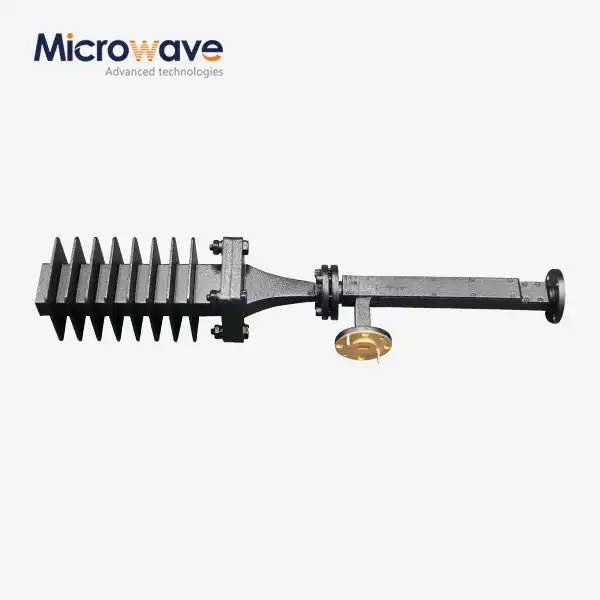 VIEW MOREWaveguide Fixed Attenuator
VIEW MOREWaveguide Fixed Attenuator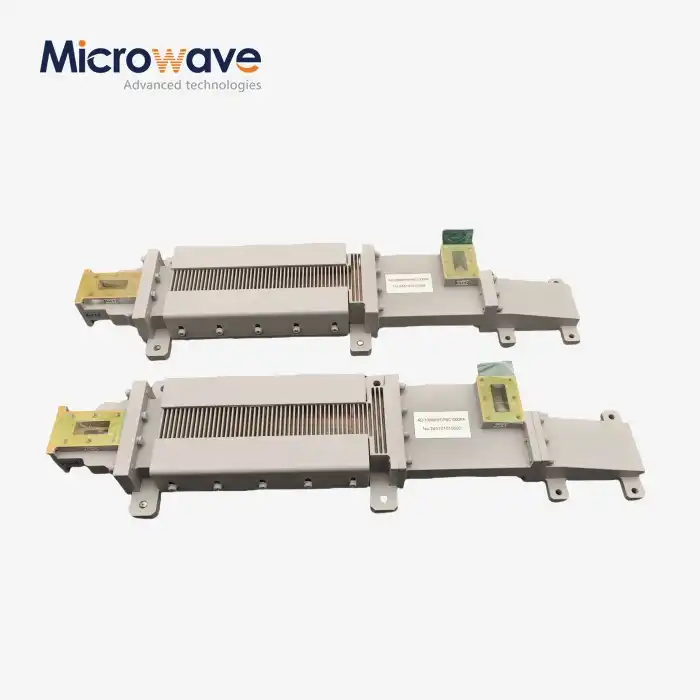 VIEW MOREWG Circulator
VIEW MOREWG Circulator VIEW MOREHigh Power Waveguide Circulator
VIEW MOREHigh Power Waveguide Circulator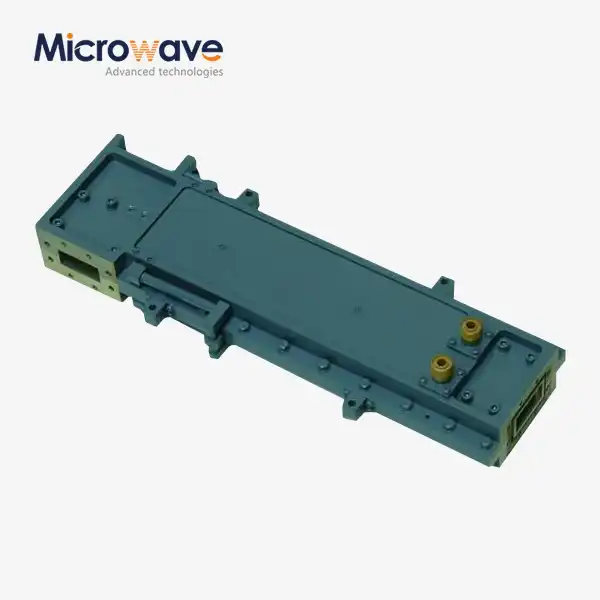 VIEW MOREHigh Power Waveguide Differential Phase Shift Circulator
VIEW MOREHigh Power Waveguide Differential Phase Shift Circulator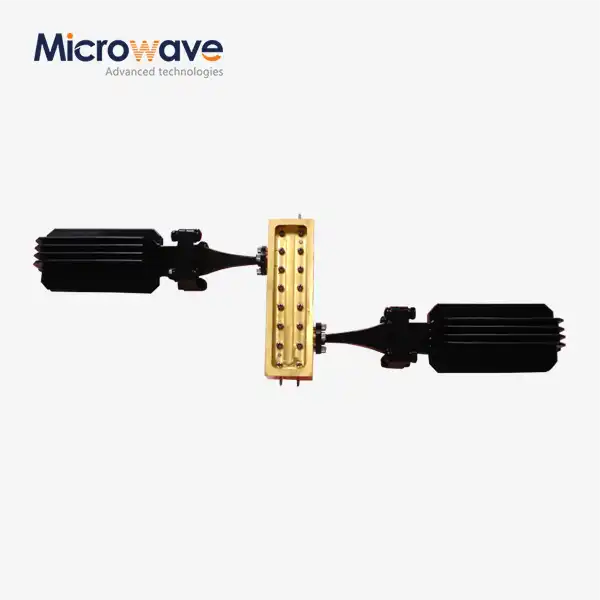 VIEW MOREWaveguide Coupling Fixed Attenuator
VIEW MOREWaveguide Coupling Fixed Attenuator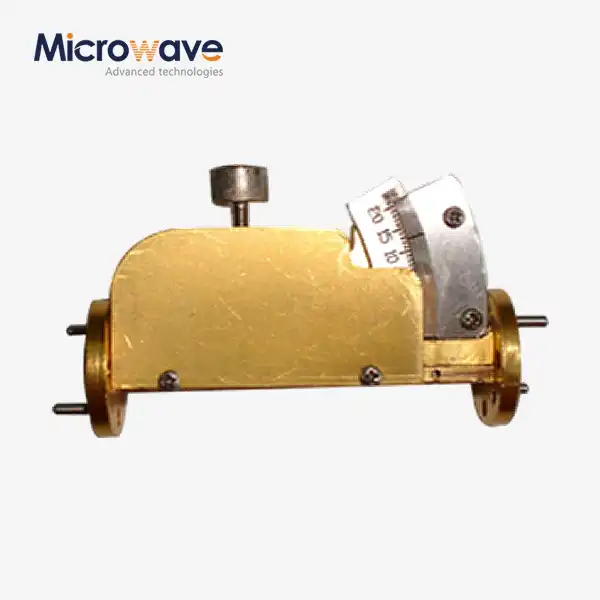 VIEW MOREWaveguide Variable Attenuator
VIEW MOREWaveguide Variable Attenuator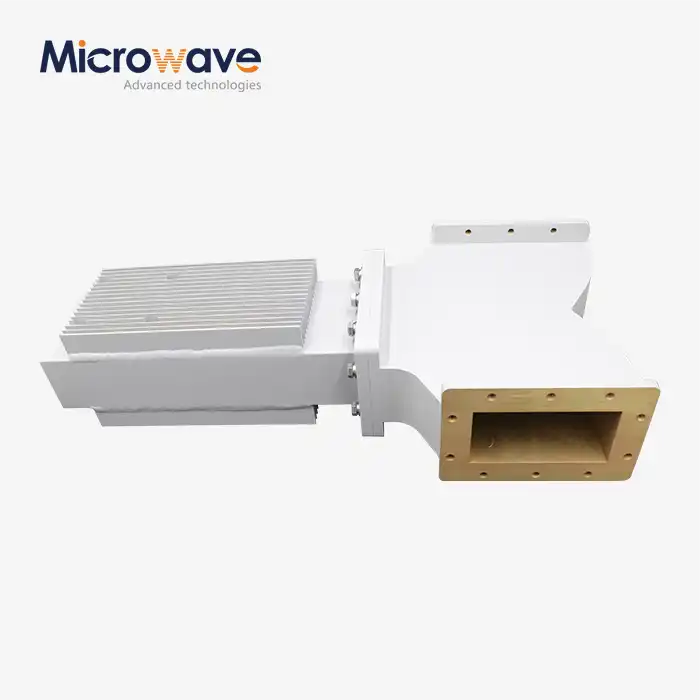 VIEW MOREWG Isolator
VIEW MOREWG Isolator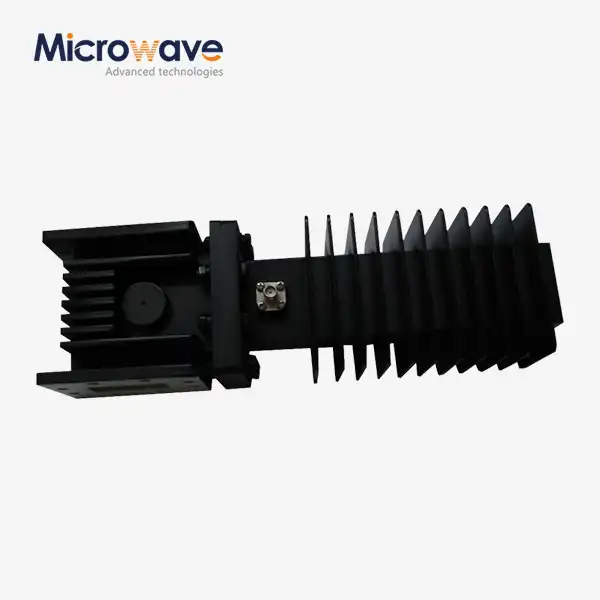 VIEW MOREHigh Power Waveguide Isolator
VIEW MOREHigh Power Waveguide Isolator




